One of the most important tests of someone’s survival skills is whether they can consistently provide food for themselves in the wilderness.
Although a knowledge of edible plants, fruits and roots is important in long term survival scenarios, survival is going to depend on mastering effective methods of taking birds, mammals, and fish for food.
As a game keeper by trade, I’ve used traps to effectively catch thousands of animals for pest control purposes.
I operated a trap line, as a deer farmer and conservation ranger, in New Zealand catching non-native possums to reduce the damage to native woodland habitats and prevent the possums from eating native bird eggs.
They were also an excellent source of fur for clothing and it is now common practice to blend possum fur with wool in the production of socks, sweaters and other clothing. Possum were surprisingly good eating too.
In the UK I use small game traps all the time, and train others in their use to catch pests such as squirrels, rabbits, rats, stoats, foxes, crows and magpies. Traps have been used for thousands of years to procure food, furs and skins for clothing, and other animal products that would once have been essential for life.
Traps are doubly effective when compared to active hunting, such as stalking on foot or fishing with a rod (yes, fish can be trapped as well), as they can be set and left to ‘hunt’ all on their own without your direct supervision or intervention, leaving you to get on with other important things.
You can also set more than one at a time, maybe even hundreds depending on your needs and once they are set all you have to do is check them regularly.
In modern terms, traps are used primarily as a means of controlling pests, and in some areas for trapping fur bearing mammals rather than a means of procuring food.
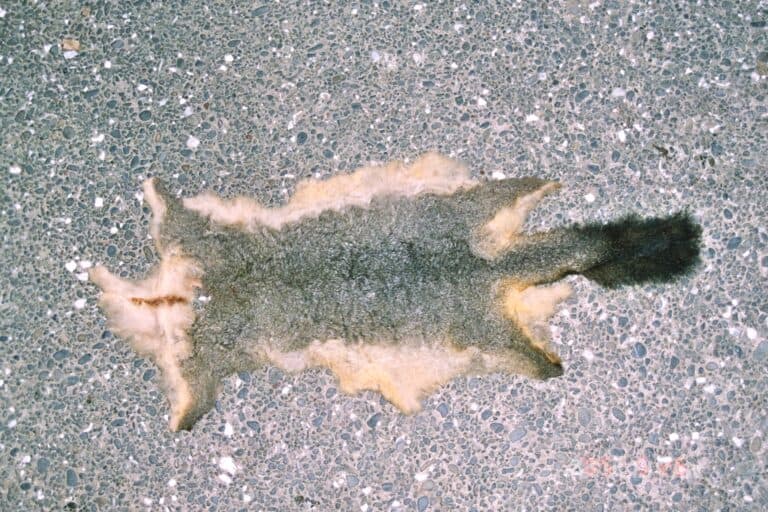
Metal traps are not a new innovation and have been used for centuries, perhaps most notably by the mountain men of the American frontier who trapped beaver for a living.
However these metal traps are heavy, expensive and take up a lot of space, and in a survival situation are not the kind of thing we are going to have lying around in great quantities.
If you do want to prepare a stock of traps amongst your other preps, a stock of wire snares are the most space efficient and versatile traps you can store for emergencies.
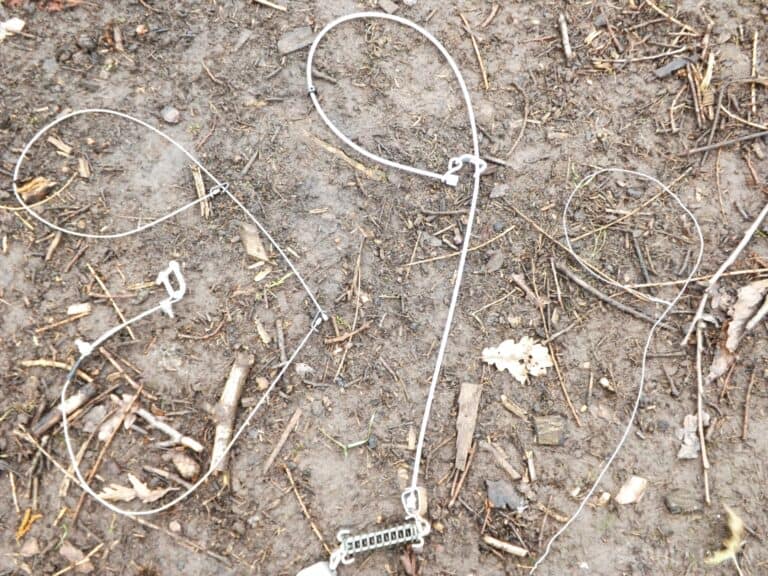
Modern trapping methods do not take all the skill out of trapping as most of the expertise lies in the proper location of traps to ensure a catch and that is down to fieldcraft skills such as tracking and a knowledge of your quarry’s habits.
However, a good knowledge of primitive trapping techniques is not only a satisfying skill but a removes your reliance on modern prefabricated traps and modern hunting methods and allows you to take game with the bare minimum of equipment.
Gathering Your Materials
Standard bushcraft or survival tools are all that’s required, a sturdy knife, a folding saw will be sufficient for the construction of all the traps that you will see here but they can also be accomplished with nothing but primitive tools.
You will also need strong cord but as we are talking about primitive traps here that will need to be primitive too, made from animal sinew or plant material.
Before starting work on your traps, you will need to make some cord. The bark from the lime tree, also known as basswood, is one of the best sources of strong fibers for cordage.
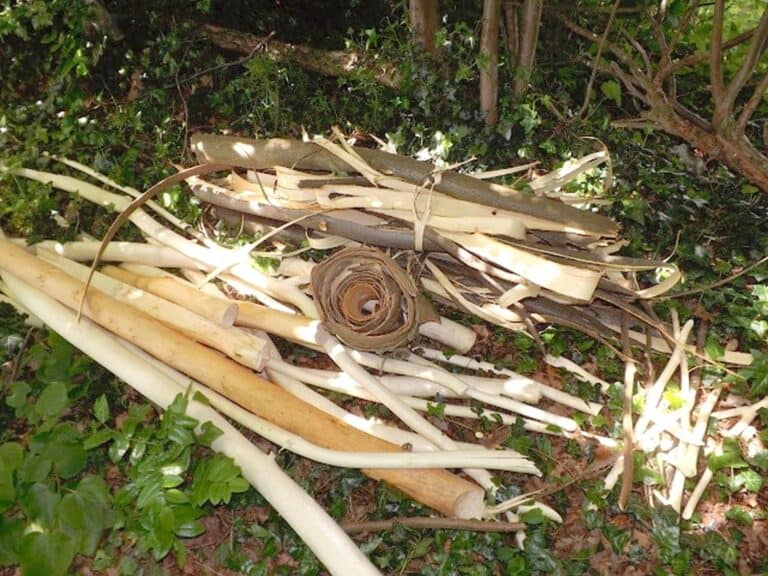
The bark of the tree needs to be collected in the summer when it can easily be stripped from small limbs or ‘suckers’ which grow from the base of basswood trees. This bark then needs to be ‘retted’ or allowed to decay slighting in water, a slow flowing stream or barrel of water.
Once the bark has retted for a week or two you will be able to strip the inner bark fibers from the outer, it’s these you need to make your cord. It can be dried and then rewetted slightly, if you do not dry and re-wet the fibers and make cord with them straight away it will shrink and not make good quality cord.
The fibers can be turned into cord by plaiting or by a method known as reverse wrapping. I prefer reverse wrapping as it produces a cord which won’t fray or unravel if it is cut or broken and has a round rather than flat cross section like a plaited cord and so runs smoother when used to make snares.
Once you’ve made your cord you can make a start on your traps, let’s start with snares.
Snares
Snares operate on the basic principle of tangling or strangling the target animal in a free running noose that becomes fastened around the head or feet of the quarry.
The problem with using primitive methods is that cord constructed using primitive methods is not as strong and resistant to the twisting and biting subjected to it by captured game as modern wire snares.
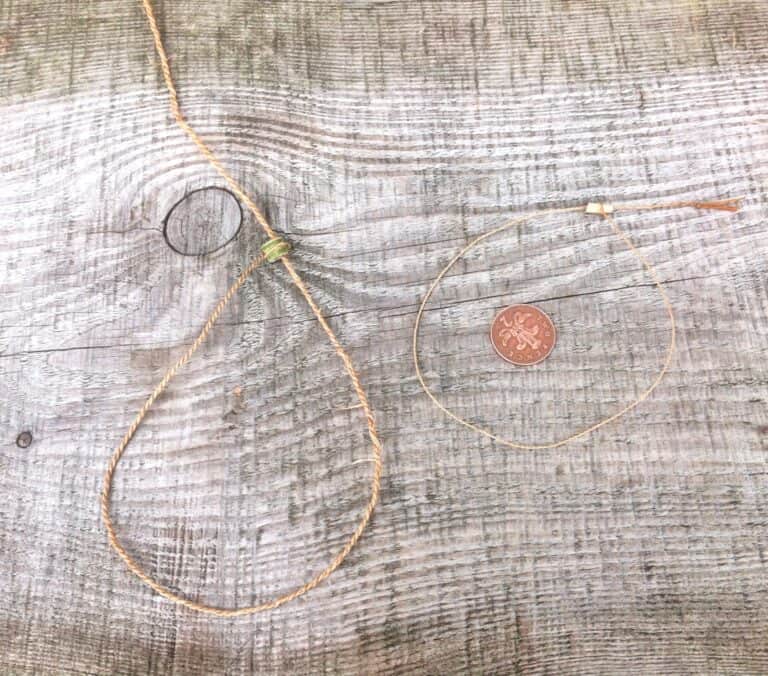
Modern wire snares can be anchored firmly to the ground and will not break however much an animal twists, turns and bites them.
Primitive options for snares might be animal sinew or various plant based materials which, while being easily strong enough to hold a captured animal won’t resist the constant biting and twisting.
For this reason we need to find a way to get the weight of the animal off the ground where it can’t use the power in its legs to pull on the snare and where it can’t reach the snare with its teeth. That is why we have something known as the spring snare or twitch up snare.
Spring snare
This trap makes use of the tension in a branch to hoist an animal off the ground where it will not only be safe from other predators who are just as likely to reap the bounty of your trapping as you are if you are not careful, but where it also can’t worry at the snare until it breaks free.
While it is dangling it can’t yank on the snare at all, but you do need to be sure that the shock of the snare suddenly being pulled skywards doesn’t break your primitive cord, you need to give it a good pull before your trust it to a snare.
There are plenty of strong enough natural materials for making snares but you will need to experiment before you set one to make sure you are happy with the strength of the cord you have made.
The simplest and easiest versions of these popular snares employ a figure seven trigger which allows a tree branch or stick to be held under tension. The trigger is made of two pieces; a stout stick driven into the ground with a notch cut in it to accept the second part of the trigger.
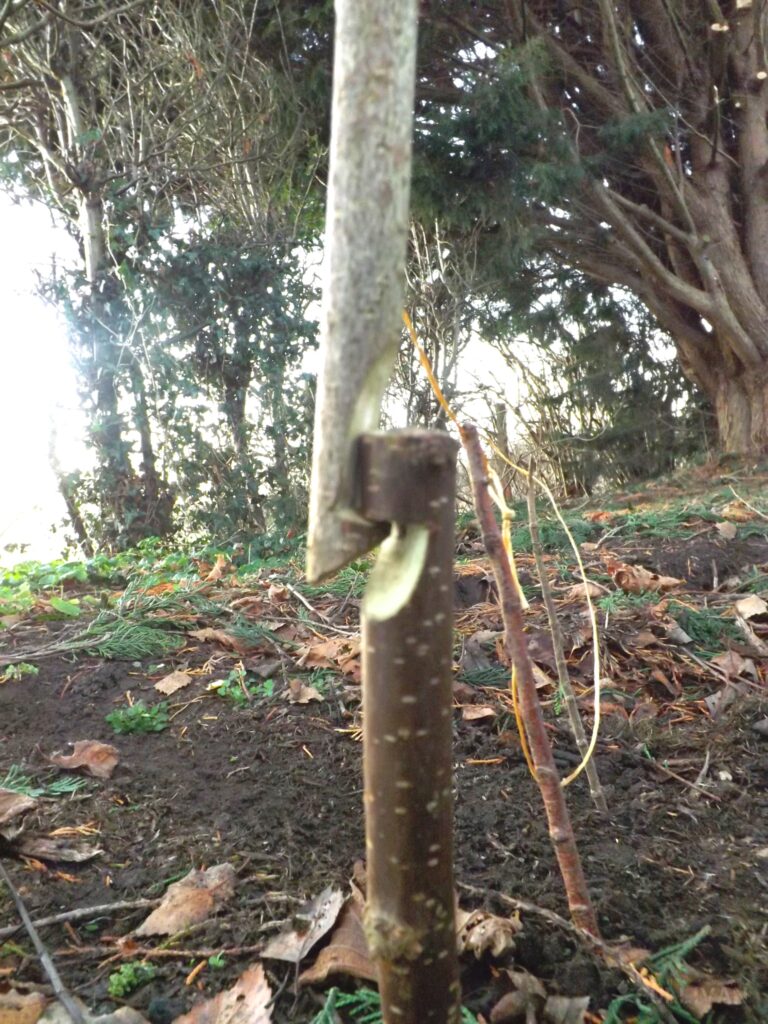
These triggers are strong enough to hold a bent tree branch or stick under tension but are easily dislodged as soon as an animal becomes entangled in the snare. The snare itself is attached to the upper part of the trigger which is in turn attached to a branch or stick under tension.
The trigger needs to be set so that the slightest pressure on the snare dislodges it, as soon as the upper part of the trigger is dislodged the stick or branch under tension will straiten pulling the snare with it.
Sometimes this will be enough to break a bird or small mammals neck and kill it instantly, at other times it will just be enough to lift your quarry off the ground and it will be strangled under its own weight.
Alternatively if it catches your target around a leg or foot it will hoist it in the air until you can come and fetch it.
There are many other ways to trigger a spring snare, but they are all slight variations on this general theme, some use a baited trigger to lure the target animal in while others feature a treadle style trigger and are designed to catch an animal around the foot.
Beware of deliberately catching animals by the foot through as there is far more chance of them escaping than if they are caught around the head and neck.
Ojibwa bird snare
Another option for employing primitive snares to catch game is to use an Ojibwa bird snare, this is designed to catch birds such as pigeons which can be tempted to perch on an artificial perch which forms part of the trigger mechanism of this trap.
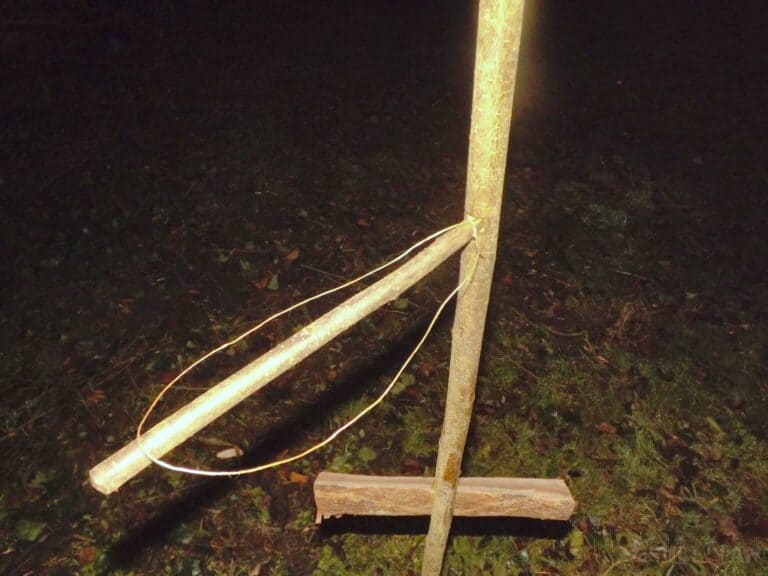
An Ojibwa bird snare is built of a stout wooden staff driven into the ground with a hole carefully carved into it, at 90 degrees to this a wooden peg can be carefully inserted into the hole and used to trap the cord of a snare.
The snare can then be draped over the peg which once baited becomes a perch for small birds.
The other end of the snare runs through the hole in the staff and is attached to a weight, a rock or log.
As soon as something perches on the trap the peg will be dislodged dropping the weight and tightening the snare around the feet of the bird, trapping it securely against the upright staff.
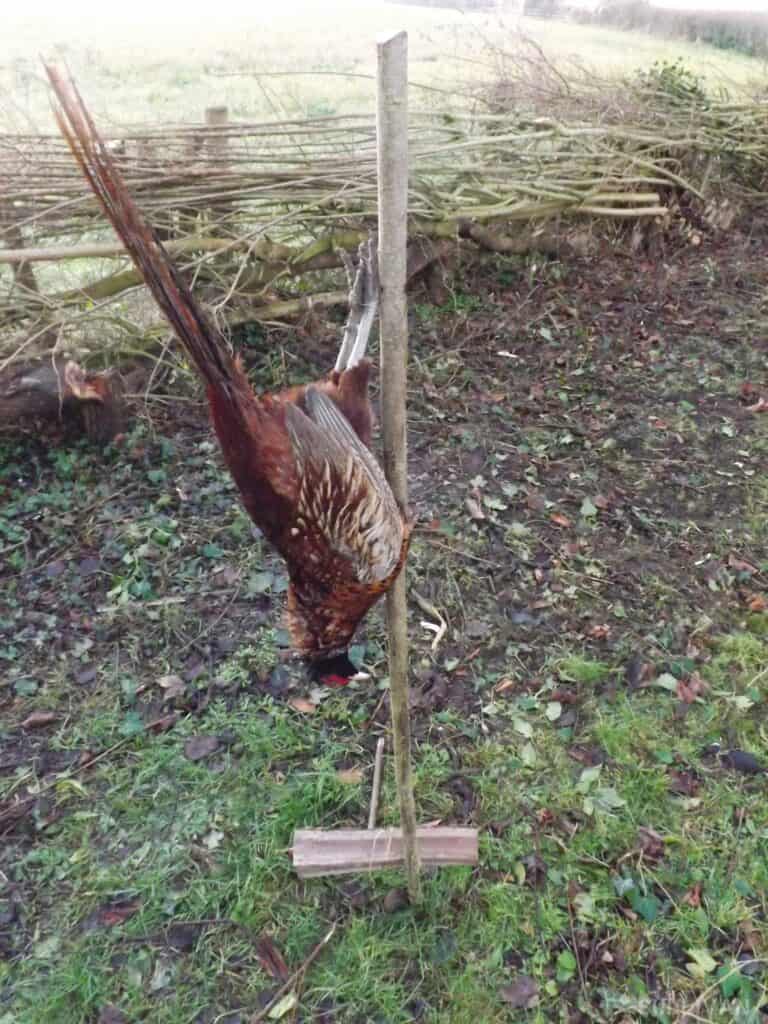
Most of you have probably heard of the four basic methods of trapping; mangle, tangle, dangle, strangle, these types of snares, dangle and strangle their quarry; possibly with an element of tangle thrown in. Next we’ll move on to traps which mangle.
Deadfalls
These kinds of small deadfalls were used historically and even in the 20th century during periods of recession and food shortage and could be very effective at catching small game. Larger deadfalls are popular in survival manuals and movies, but are really very impractical and dangerous.
Deadfalls are traps which drop a heavy weight on your quarry, that weight needs to be at least five times the weight of your quarry to kill it or at least to prevent it from extracting it ‘self from under your deadfall until the weight of the deadfall suffocates it or you can check it and despatch your quarry.
Very large deadfalls can be dropped with a figure seven trigger activated by a trip wire in a similar way as a spring snare but one of the key parts of a deadfall is a solid striking surface so that maximum force can be transferred to the target animal rather than being absorbed by soft ground, or vegetation.
These very large deadfalls which fall directly onto the ground lack this striking surface so are often made very heavy indeed to improve their effectiveness or are even equipped with spikes.
These deadfalls might be used for large game such as deer and wild boar but they are very dangerous to set and need to be marked very clearly as they are large enough to kill humans.
Smaller deadfalls are not so hard to set and can be set in much larger numbers. With trapping you need to set lots of trap, just one or two isn’t enough as they don’t cover any more ground than you could hunting and one trap might never catch.
The more traps you set the better your chances are of catching and the larger the potential yield for your efforts. Deadfalls can be triggered by a lot of different trigger mechanisms and this is what sets them apart from each other;
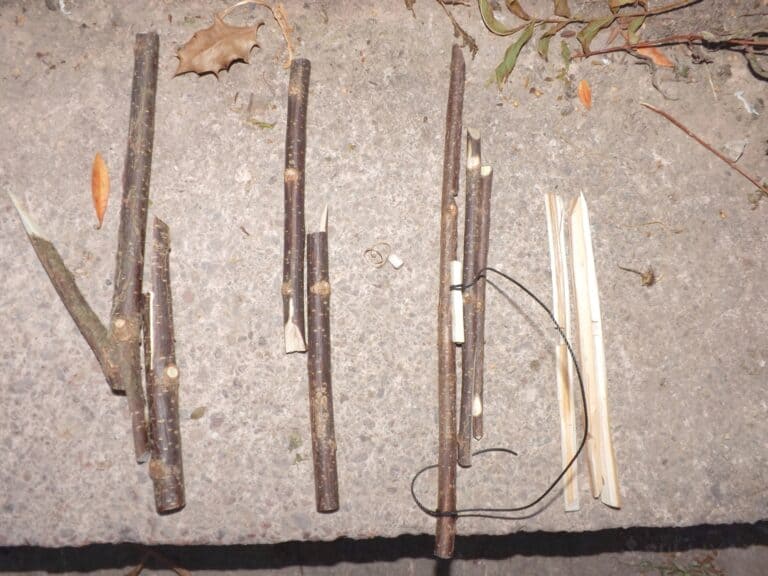
Barber Chair Trigger
There are a number of variations on this trigger, some use a forked stick, some use what is known as a promontory peg both of which can be used to fix bait directly to the trigger stick. Alternatively a trip wire can be attached to the trigger which can then be used to drop a basket onto the target animal.
These triggers work by relying on a carved trigger splitting in the center when the bait or trip wire is dislodged.
These triggers must be positioned so that they don’t stop the trap from falling when the trigger is dislodged so the bottom of the trigger stick mustn’t be pushed into the ground…
Otherwise when the trigger is dislodged the top section of the trigger may be dislodged but the trap will then just land on the lower portion of the trigger leaving a gap so that the target isn’t struck properly or it leaves a gap for the target to escape out of.
Barber chair triggers can be made very easily without any modern tools and of all the other trigger mechanisms mentioned here are the most versatile.
‘Figure 4’ Trigger
Figure 4 triggers take their name from the shape of the trigger mechanism when it is set and can only be used effectively with fairly light deadfalls.
The horizontal stick is baited and dislodges the whole assembly when it is touched. Some careful and accurate notching of sticks is required for this trap and the clean edges required for crisp operation of the trigger might be difficult to achieve with stone tools if you are limited to just primitive tools.
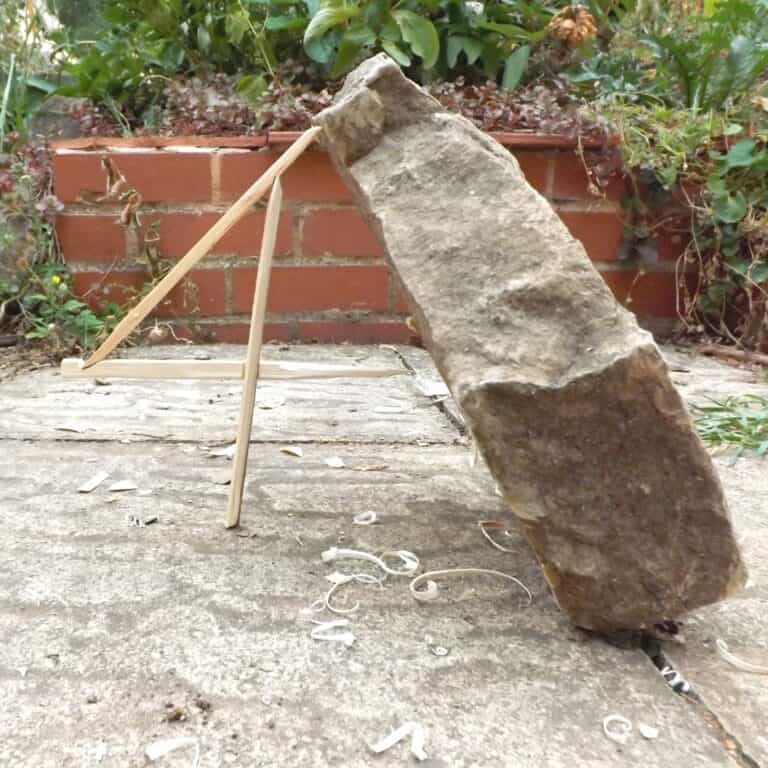
Also because of the crisp, sharp edges required for the trap to function properly it is best to carve these from dead, dry wood rather than green wood. Also bear in mind that some wood smells quite strongly when it is green which might put your quarry of from entering the trap.
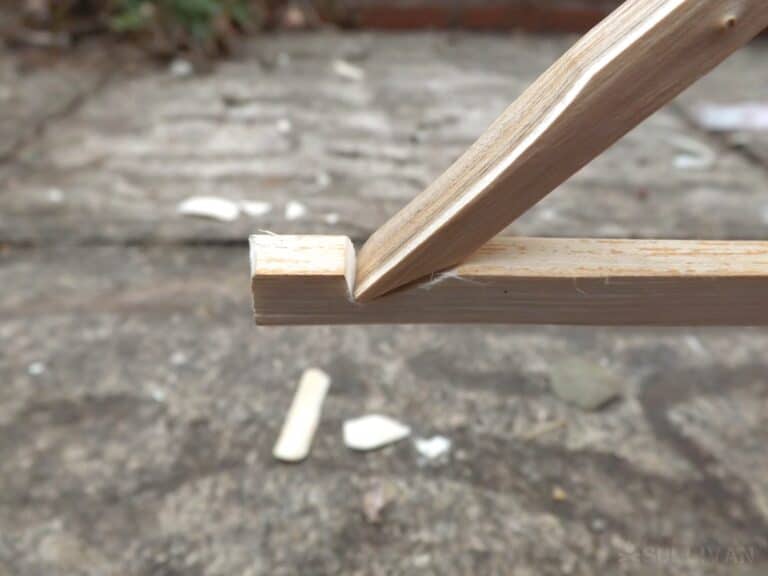
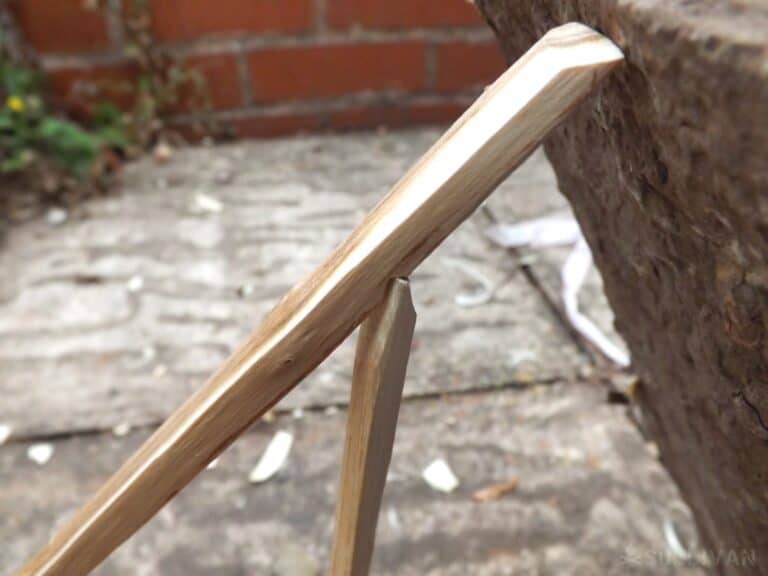
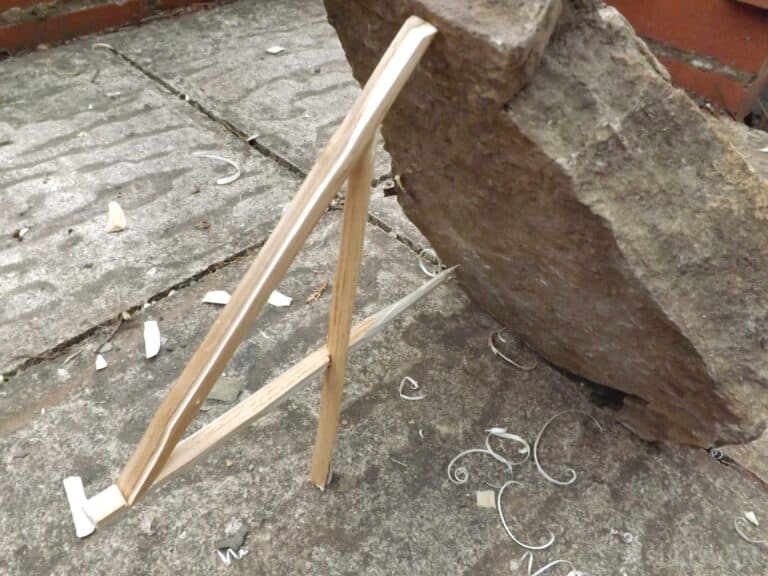
Paiute deadfall trigger
Another trigger for very light traps and it is very fiddly to set, these take their name from the Paiute Indian tribes who lived in the desert regions of Arizona, Nevada and Utah, and would use similar traps for catching small mammals.
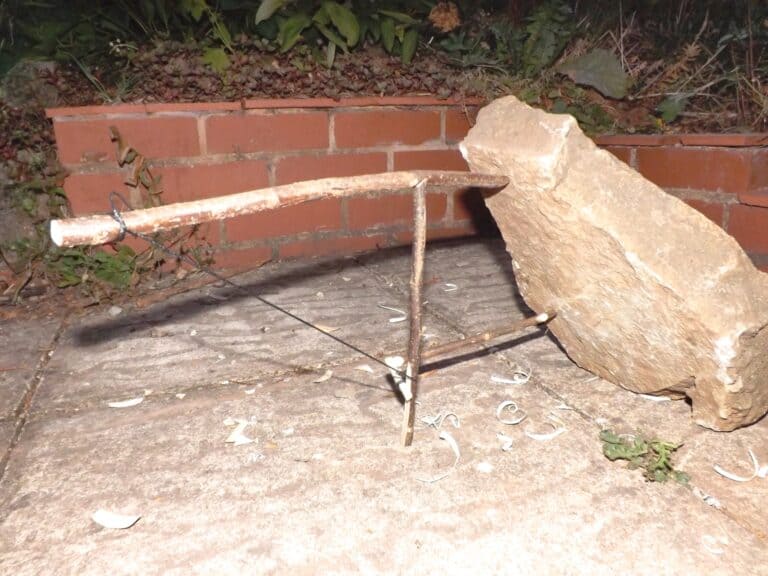
The trigger mechanism is very fiddly to set but works very well. The bottom of the vertical stick needs to carved square as does the toggle otherwise they will slide against each other and rotate and you will never be able to get the trap set.
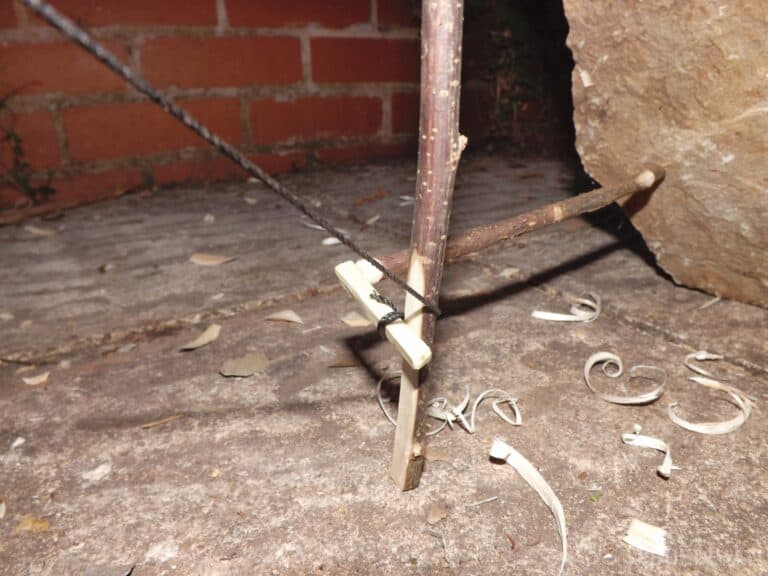
The toggle is attached to one end of a piece of cordage which is wrapped around the vertical stick before extending up to the upper horizontal. The lower horizontal shown here is not attached other than by pressure between the toggle and the face of the deadfall.
The lower horizontal is baited, and the slightest pressure will allow the weight of the deadfall to force the upper horizontal down and with nothing holding the toggle in pace the trigger will collapse.
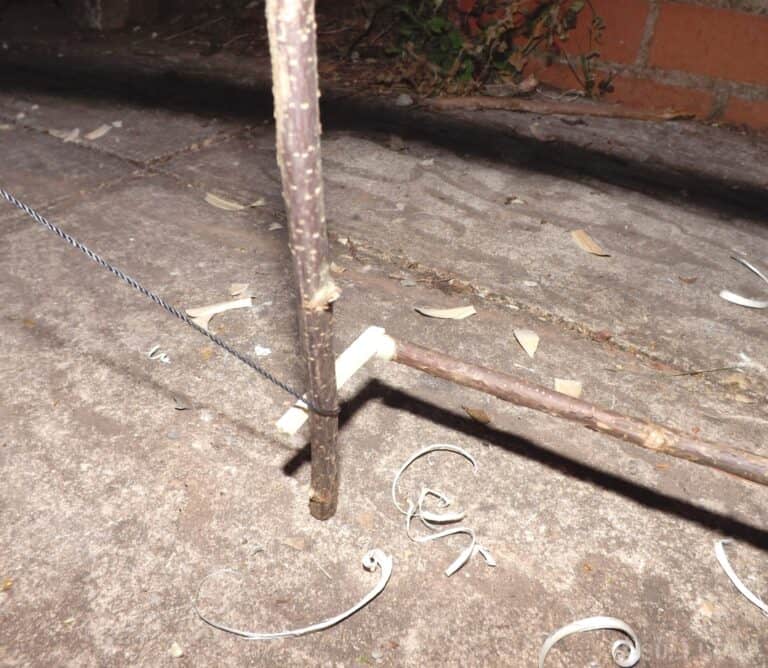
As well as dropping killing deadfalls these same trigger mechanisms can be used to drop basket traps to catch small game live, this type of cage trap are best used for birds as small mammals can burrow out or squeeze through the gaps but these are perfect for birds such as pheasants, partridge, quail or pigeons.
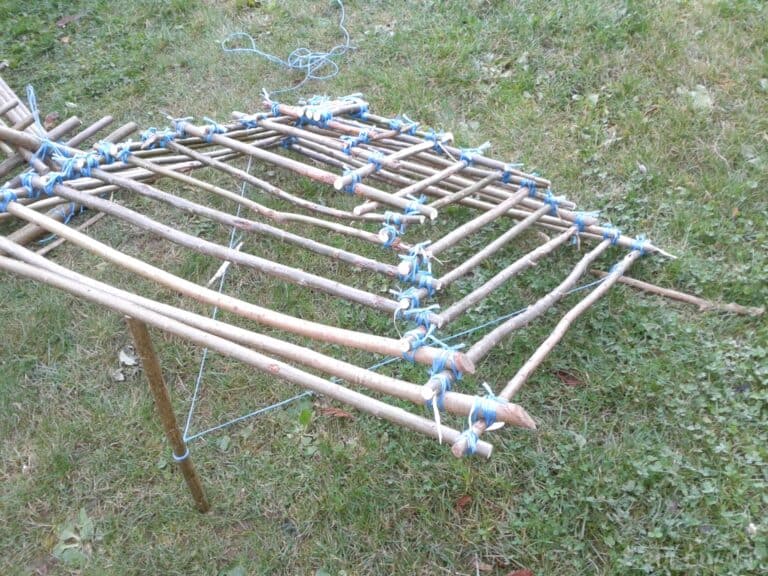
The trap should be baited and potentially weighted to stop birds lifting them back up. You can catch several birds in these at once if you are lucky.
With these traps among your arsenal of primitive survival skills you will be able to trap a range of small game and with a little adaption and ingenuity use the same triggers for a whole range of similar traps.
Disclaimer
While our Stone Age ancestors would not have been restricted in their hunting methods by law and legislation but WE ARE.
So please be aware that while it might be useful to practice primitive trapping skills in case of survival situations or emergencies almost all primitive traps are now legislated against on grounds of animal welfare, build them yes but make sure you are aware of local legislation before using them to catch or kill something.
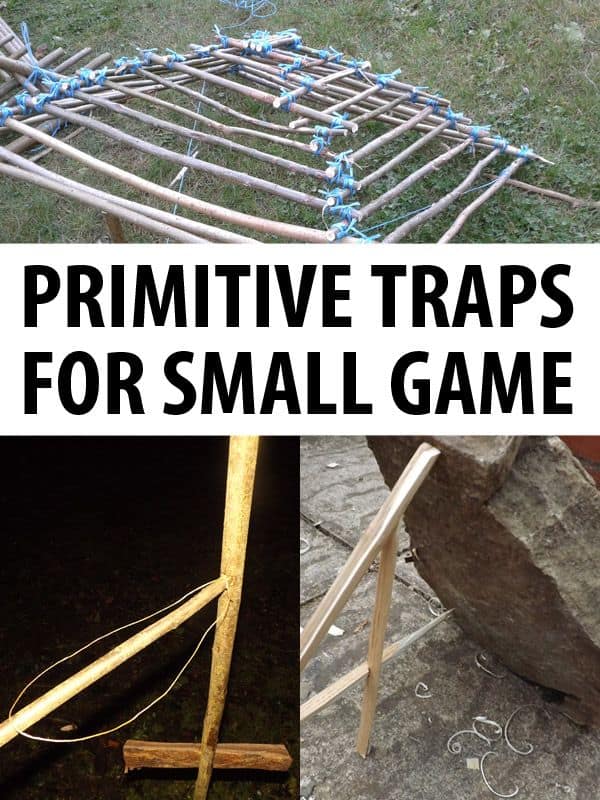

Geoff is a lecturer at Hartpury College. He has been teaching at colleges for eight years and in that time has worked at some of the most prestigious land based colleges in Britain. He trained as a professional hunter and game keeper and as well as his teaching job he still manages deer professionally as a deer stalker, carrying out culls, guiding clients and advising on deer management strategy.
He has operated his own bushcraft and survival skills training companies since 2010 and has also managed outdoor and environmental education centers in Norfolk and Scotland over the course of his career. A keen traveler, Geoff has honed his survival skills in New Zealand and Scandinavia, he speaks fluent Swedish and has proven his bushcraft ability on many expeditions.
Several of these expeditions were on long distance trails in the UK to raise money for Whizz Kidz a charity that supports disabled children, Geoff has hiked over 2000 miles in aid of this charity.

I’d like to show you the correct way to make figure 4 triggers. There’s a certain way that works well and I used deadfalls for years in the 40’s, 50’s, 60’s, and 70’s. If you’d like I would be glad to send you a pair of triggers like I used to help put myself through school and later in the 60’s, 70’s, and 80’s to support my family. I was a professional trapper up into the 90’s until fur prices dropped. Thank you.
The photo of a ‘possum skin is NOT a ‘possum, it’s a gray fox. ‘Possums don’t have bushy tails!
It’s a possum skin, not an opossum. He was in New Zealand & it’s a different animal. Google brush tailed possum.